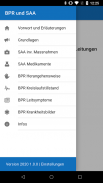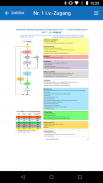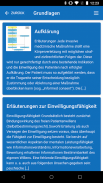





BPR und SAA

Description of BPR und SAA
In the meantime, the first revised and Pathways Rescue Service (BPR) extended version of the Standardized Procedures (SAA) has been used as algorithms for the implementation of invasive procedures and medication by emergency paramedics in emergency life-threatening emergencies. These documents and materials were developed in a working group of Medical Lines Rescue Service from four state associations (Mecklenburg-Western Pomerania, North Rhine Westphalia, Saxony and Saxony-Anhalt) and coordinated in North Rhine-Westphalia with the Cities Day, the county council and the city and community federation. They are based on the catalogs that were agreed in Pyramid Process I in 2013 and 2014. Under the leadership of the Federal Association of Medical Directors Rescue Service various medical societies, rescue service professional associations and training institutions have come to the conclusion that these measures and drugs in the context of 3-year paramedic training can be learned so far that they can be mastered in the field. In addition, the treatment paths rescue service based on the emergency medical conditions, in the context of the pyramid process II in collaboration with medical societies, the BAND and the German professional association Rescue Service (DBRD) and drafted on 21.12.2016 in Cologne with representatives of the rescue service professional associations, fire departments and Training institutions were agreed. As part of the regular revisions and additions, these work instructions constantly incorporate new scientific findings and feedback from rescue services.
In North Rhine-Westphalia, at the initiative of the Ministry of Health, the Medical Association and the National Association of Medical Associations are coordinating their expertise in operational tactics, organization and personnel management.
The responsible Medical Direction Rescue Service is responsible for ensuring that the work instructions given by her are regularly trained, checked and thus mastered in operational practice (assignment responsibility). The execution responsibility of each paramedic remains unaffected. The "off-label-use" problem, which exists for emergency services and rescue service personnel for some medicines and medical devices in the rescue service setting, was handled by the Federal Association of ÄLRD Germany under legal advice. Accordingly, the implementation of appropriate measures by paramedics and paramedics is possible if the medical director prescribes rescue service in specific and clear procedural instructions, the scope of the rescue service and thus anticipates the decision-making process. Dosing information and age limits represent the professional consensus of the four participating national associations / working groups of the medical director rescue service on a scientific basis. They thus ensure the greatest possible user and patient safety. The specified recommendations were prepared and checked by the authors with the greatest possible care. Despite careful manuscript creation and correction of the sentence errors can not be excluded. The authors are also aware that this does not cover all areas of emergency medical care, but the recommendations contained herein ensure the current standard of rescue service for the work of emergency paramedics.
The present standard operating procedures and treatment pathways are subject to regular review and continuous development as part of an ongoing development process.


























